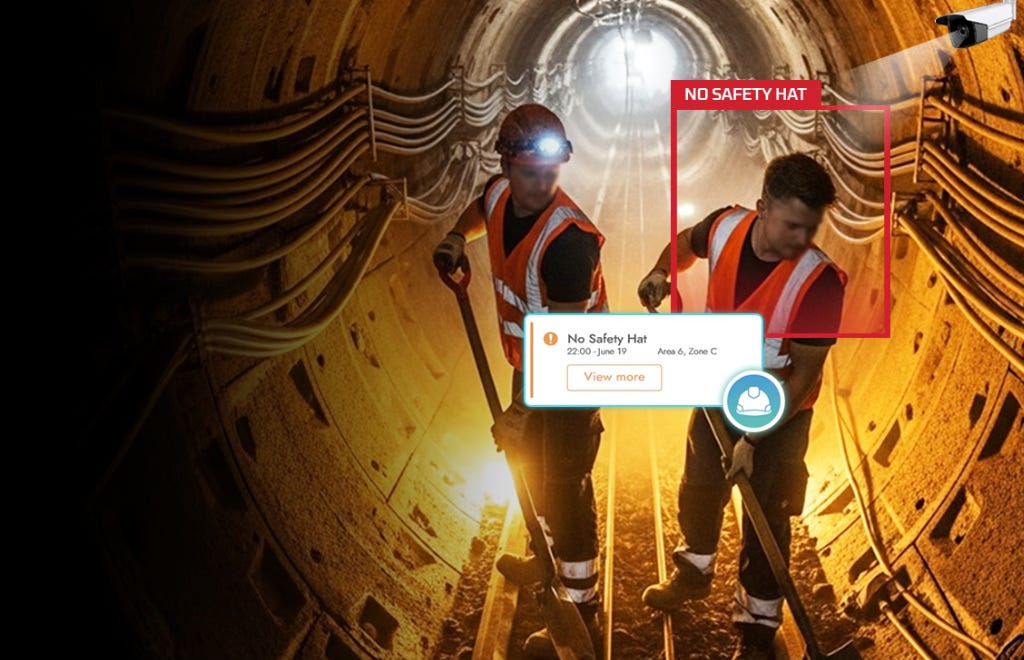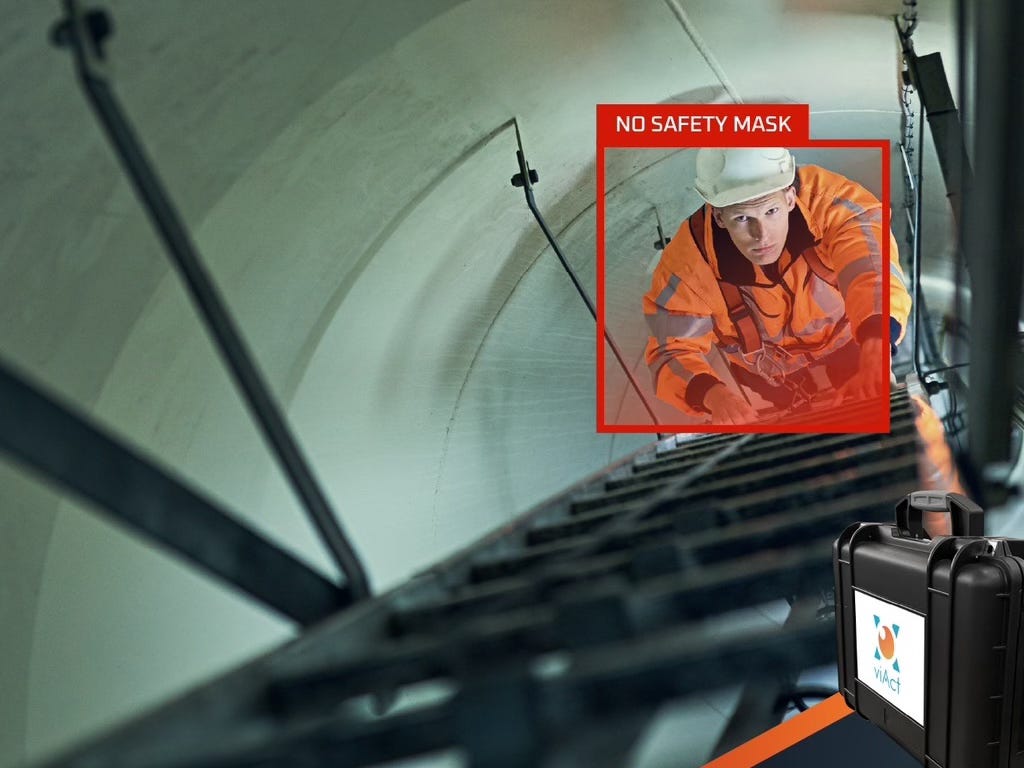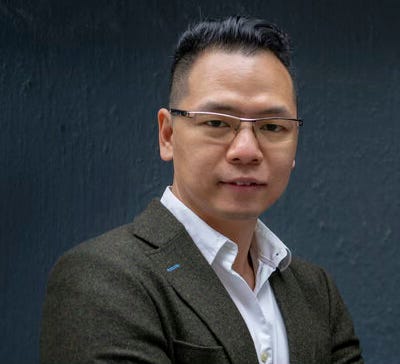AI monitoring: extra eyes on workers in dangerous environments
What happens when a miner descends a kilometre below the earth or a construction worker climbs into scaffolding high above Johannesburg's skyline?
Every day, they come face-to-face with risks that are part of their working reality. South Africa, with its reliance on high-exposure sectors like mining, construction and energy. It has long carried some of the highest workplace accident rates in the world.
According to Department of Employment and Labour, there was least one, and sometimes two, fatalities each week in the South African construction sector in 2023.
Similar fatality rates are common across our continent. It’s dangerous being a miner in Africa, where oversight can be weak.
The International Council on Mining and Metals (ICMM) reported in its 2023 regional fatality study in the same year that Africa accounted for 44% of global mining fatalities, compared with 22% in South America and 12% in North America. The challenge of protecting workers has pushed safety professionals to search for new solutions.
Their answer lies not underground or on scaffolds, but under the silent and watchful eye of Artificial Intelligence safety assistant.
Across Africa, industries are adopting AI-assisted monitoring technologies as a means to not only detect hazards faster, but to predict and prevent accidents before they occur. Mining giant Gold Fields is implementing AI-based analytics to comb through its operational insights to enhance safety. Companies are shifting from traditional measures to predictive approaches that safeguard workers in real time, driving a transformation into data-driven guardianship of human lives.
Why South Africa Needs a New Safety Paradigm
According to the Minerals Council South Africa, in 2021 a total of 74 fatalities occurred in the mining sector. This was reduced to 49 in 2022, slipped up to 55 in 2023, but was pushed back down to 42 in 2024. Better, but not good enough. The stubbornly high number of fatalities is still evident.
It’s not just mining. Construction and manufacturing rank among South Africa’s five most hazardous sectors, with eight construction workers dying each month (Department of Employment and Labour). There is a need for more intelligent type of monitoring systems that can scale across multiple high-risk environments.
Traditional monitoring methods across these sectors take the form of manual inspections, checklists and post-incident investigations. But they struggle to keep pace with the scale and complexity of today’s worksites. This limitation is paving the way for automated, AI-based solutions, which can augment traditional methods and provide constant, real-time oversight that never gets tired, never takes short cuts.
By layering workplace safety with computer vision, sensor integration and predictive analytics over existing operations, safety managers can gain an “always-on” partner that continuously learns.
From risky worksites to environments that take of you
The practical applications of AI monitoring in the African continent are already visible. For example, McKinsey mentions how a South African mining company has used AI to offer equipment maintenance support to operators in the field, bringing an estimated economic value of $5.3 billion to $8.5 billion.
Construction sites of Puma Energy, which operates petrol stations across South Africa and Namibia, have seen AI-based safety vigilance systems deployed, which detect safety violations such as non-compliance with PPE equipment and detecting hazards.
These digital safety systems are particularly relevant in developing markets where resources for safety oversight are limited. Today, a single inspector might have to oversee multiple sites spread across a region, making it impossible to be physically present all the time.
AI-based monitoring bridges this gap by turning onsite CCTVs cameras into an intelligent observer capable of alerting EHS teams in real time. From detecting minor safety violations to preventing conflicts before they escalate, AI transforms risky worksites by delivering instant alerts and actionable insights.
AI helps a mining site in Ghana slash workplace conflicts
In Ghana, a major mining operator faced a recurring challenge that extended beyond the usual safety hazards: worker altercations. The increasing levels of disagreements over workloads and overtime sometimes escalated into physical confrontations. This increased the chances of workplace accidents, especially during night shifts and during meal breaks.
To address this, the company turned to AI-powered monitoring. By integrating an incident detection module, the site was able to observe worker behaviour, and identify early signs of aggression, alerting supervisors before incidents could escalate, allowing cooler heads to step in at times of heightened tension.
The results were transformative. Within three months of deployment, the site recorded a 62% reduction in workplace altercations and related operational disruptions. The technology did not replace human oversight—it augmented it, enabling supervisors to act with precision and confidence even in the site’s most challenging areas.
I believe that Africa is building the foundations of its future through its growing cities, energy systems and industries. Industrial and infrastructure projects are scaling rapidly, but worker risk remains high. AI-driven monitoring delivers continuous, real-time insights into hazards and unsafe behaviours, enabling proactive interventions. This transforms safety from reactive compliance into intelligent, data-led protection.
The example in Ghana highlights how AI monitoring does not need to be limited to physical safety, but can extend to workplace well-being and social stability, a critical consideration for high-risk sectors in developing regions.
A safer industrial future
The evolving embrace of AI monitoring in African countries is not just a story of technology adoption. It is part of a shift toward building smarter workplaces.
As one safety officer in a construction site in Johannesburg recently noted, “The difference is that before we found out about hazards when it was already too late. Now, we know before it happens. That changes everything.”
In a continent where every individual saved strengthens the fabric of communities, AI is more than a promise that progress need not come at the cost of human lives.
[This is a guest article by Gary Ng, CEO and co-founder of viAct, a tech startup focused on industrial safety]





